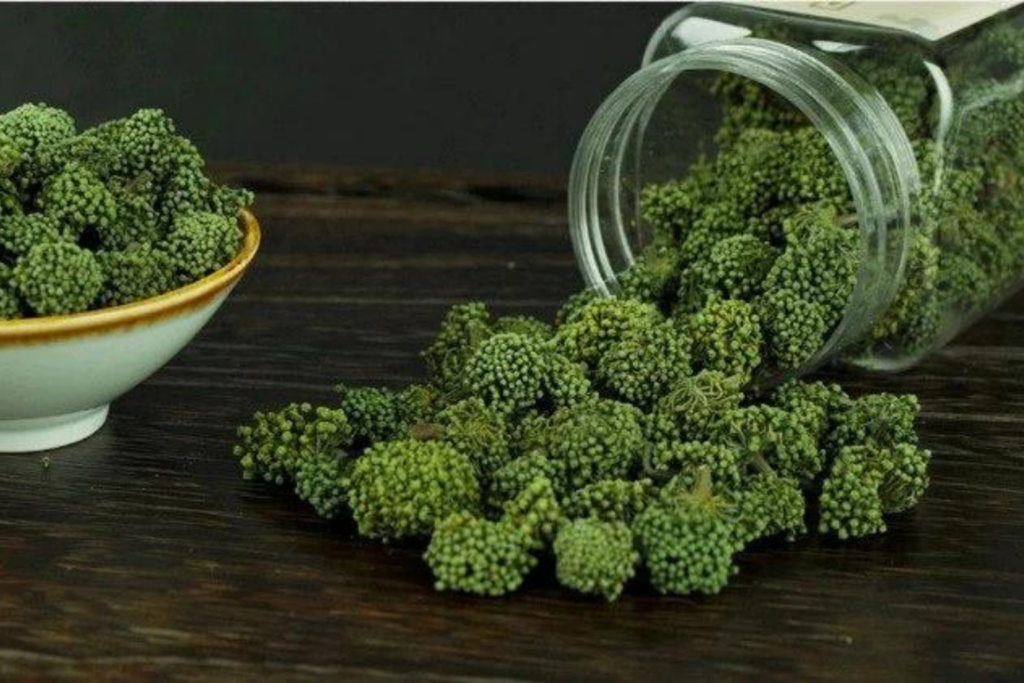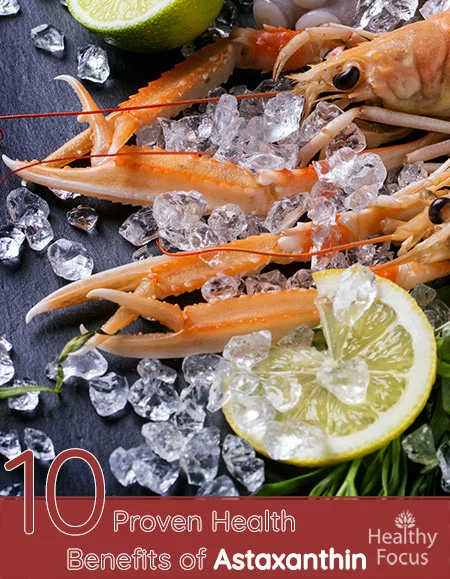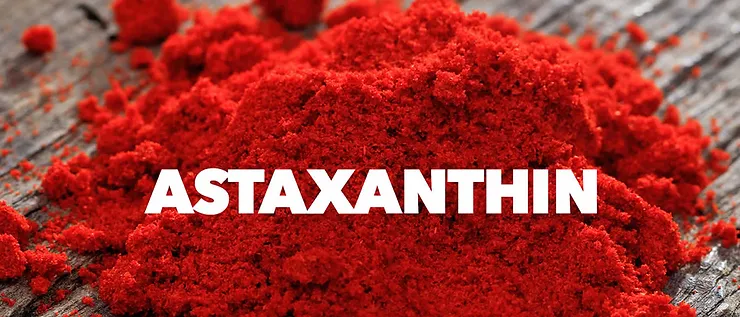Flowery Knotweed, scientifically known as Polygonum capitatum, is a herbaceous perennial plant belonging to the Polygonaceae family. Native to East Asia, particularly China, Japan, and Korea, it has become naturalized in various regions around the world. Commonly referred to as “knotweed,” this plant is recognized for its vigorous growth, distinctive knot-like clusters of flowers, and invasive nature.
The botanical characteristics of Polygonum capitatum include heart-shaped leaves arranged alternately along the stems. The plant typically forms dense mats as it spreads horizontally through its rhizomes. During the growing season, which spans from late spring to early fall, Flowery Knotweed produces erect stems that can reach up to several feet in height.
One of the most striking features of Polygonum capitatum is its inflorescence, which consists of dense, rounded clusters of tiny flowers. These flower clusters, often pink or white in color, give the plant its common name “flowery knotweed.” The blooming period occurs in mid to late summer, adding a burst of color to the landscape.
While Flowery Knotweed possesses ornamental appeal, its rapid growth and ability to form dense colonies make it a problematic invasive species in certain ecosystems. The plant’s rhizomatous nature allows it to outcompete native vegetation and establish itself in a variety of habitats, including disturbed areas, riverbanks, and forest edges.
The Botanical Description of Flowery Knotweed
1. Stems and Leaves: Flowery Knotweed’s stems are flexible and prostrate, allowing the plant to trail along the ground. The heart-shaped leaves are alternately arranged along the stems, showcasing a vibrant green color.
2. Flowers: The small, intricate flowers of Flowery Knotweed form in dense, cylindrical spikes at the tips of the stems. The flowering clusters create a visually appealing display during the plant’s blooming period.
3. Growth Habit: As a ground-covering plant, Flowery Knotweed exhibits a spreading growth habit. It forms a mat-like structure, providing coverage in open areas and creating a distinctive appearance in natural settings.
4. Reproductive Structures: Flowery Knotweed reproduces both by seeds and vegetatively through its trailing stems. This reproductive strategy contributes to its ability to colonize and thrive in diverse habitats.
5. Foliage Texture: The leaves of Flowery Knotweed have a smooth texture, enhancing their visual appeal. The plant’s foliage density contributes to its effectiveness as a ground cover.
6. Color Variation: The stems of Flowery Knotweed may display varying colors, ranging from reddish hues to green. This color variation adds to the plant’s aesthetic charm and makes it visually interesting.
7. Rhizomatous Growth: Flowery Knotweed often spreads through rhizomes, underground stems that give rise to new shoots. This rhizomatous growth contributes to the plant’s ability to colonize and adapt to different soil conditions.
8. Size: While individual plants may have a relatively small size, the collective growth of Flowery Knotweed can cover extensive areas, forming a dense carpet in favorable environments.
9. Adaptability: Flowery Knotweed exhibits adaptability to different soil types and moisture levels, allowing it to thrive in a variety of ecosystems, from woodlands to disturbed areas.
10. Seasonal Changes: The appearance of Flowery Knotweed may undergo seasonal changes, with the plant’s growth and flowering patterns responding to environmental cues, such as temperature and daylight duration.
The Geographic Distribution of Flowery Knotweed
1. Native Range: Flowery Knotweed is indigenous to East Asia, including countries such as China, Japan, and Korea. In its native range, the plant is found in a variety of habitats, from forests to open fields.
2. Global Spread: Beyond its native range, Flowery Knotweed has been introduced to and naturalized in many parts of the world. It has become established in North America, Europe, and other continents, showcasing its invasive characteristics.
3. Invasive Nature: Flowery Knotweed’s invasive tendencies make it capable of colonizing disturbed areas, roadsides, and forest edges. The plant’s adaptability allows it to thrive in both natural and human-altered landscapes.
4. Preferred Habitats: This plant shows a preference for areas with well-drained soils, and it often thrives in locations with ample sunlight. Flowery Knotweed is frequently encountered in gardens, along trails, and in urban green spaces.
5. Climate Tolerance: Flowery Knotweed demonstrates a degree of climate tolerance, with its ability to grow in regions with diverse temperature ranges. It can persist in both temperate and subtropical climates.
6. Soil Types: The plant shows versatility regarding soil types, growing in soils with varying textures, including sandy, loamy, and clayey soils. This adaptability contributes to its ability to establish in different environments.
7. Human-Mediated Spread: Human activities, including the movement of soil and landscaping practices, contribute to the unintentional spread of Flowery Knotweed. Its rhizomatous growth allows it to quickly colonize new areas.
8. Impact on Ecosystems: In regions where it has been introduced, Flowery Knotweed can have ecological impacts. Its aggressive growth may outcompete native vegetation, potentially affecting local biodiversity.
9. Control Measures: Given its invasive nature, managing the spread of Flowery Knotweed often involves employing control measures. These may include manual removal, herbicide applications, and habitat restoration efforts.
The Chemical Composition of Flowery Knotweed
1. Resveratrol: Flowery Knotweed, like other plants in the Polygonaceae family, is recognized for containing resveratrol. This polyphenolic compound is known for its antioxidant properties and has been studied for potential health benefits.
2. Quercetin: Quercetin, a flavonoid, is found in Flowery Knotweed and contributes to its antioxidant and anti-inflammatory attributes. Flavonoids are known for their role in plant defense mechanisms.
3. Anthraquinones: Some species of Knotweed contain anthraquinones, which have been investigated for their potential laxative effects and other medicinal properties.
4. Tannins: Tannins are present in Flowery Knotweed and are associated with astringent properties. These compounds may have ecological roles in plant defense against herbivores.
5. Essential Oils: Certain species of Knotweed may contain essential oils, contributing to the plant’s aromatic properties. These oils can have ecological functions and may also be explored for potential uses in aromatherapy.
6. Polyphenols: Various polyphenolic compounds, including catechins and proanthocyanidins, are part of Flowery Knotweed’s chemical composition. These compounds are recognized for their potential health-promoting effects.
7. Lignans: Some Knotweed species contain lignans, which are compounds known for their antioxidant properties. Lignans may contribute to the plant’s defense against oxidative stress.
8. Flavones and Flavonols: Flowery Knotweed is likely to contain flavones and flavonols, which are subclasses of flavonoids. These compounds play roles in plant pigmentation and defense mechanisms.
9. Sterols: Sterols, including beta-sitosterol, are part of the chemical makeup of Flowery Knotweed. These compounds have been studied for their potential cholesterol-lowering effects.
10. Phenolic Acids: Flowery Knotweed may contain various phenolic acids, such as caffeic acid and ferulic acid. Phenolic acids contribute to the plant’s overall antioxidant capacity.
11. Proanthocyanidins: Proanthocyanidins, also known as condensed tannins, are polyphenolic compounds found in some Knotweed species.
Read Also: Ruminant Animals: A Comprehensive Guide
The Medicinal Health Benefits Of Flowery Knotweed (Polygonum capitatum)

1. Antioxidant Properties: The presence of resveratrol, quercetin, and other polyphenolic compounds equips Flowery Knotweed with potent antioxidant properties. These antioxidants help neutralize harmful free radicals in the body, supporting overall health.
2. Anti-Inflammatory Effects: Quercetin, a flavonoid found in Flowery Knotweed, exhibits anti-inflammatory effects. This property may contribute to reducing inflammation in the body, potentially benefiting individuals with inflammatory conditions.
3. Cardiovascular Health: Certain compounds, including resveratrol and proanthocyanidins, have been studied for their potential cardiovascular benefits. They may support heart health by promoting healthy blood circulation and managing cholesterol levels.
4. Immune System Support: The antioxidant-rich composition of Flowery Knotweed may contribute to supporting the immune system. By combating oxidative stress, the plant’s phytochemicals may help maintain a robust immune response.
5. Gastrointestinal Health: Anthraquinones, present in some Knotweed species, have been investigated for their potential laxative effects. In traditional medicine, Flowery Knotweed might have been used to promote gastrointestinal health.
6. Skin Health: The antioxidant and anti-inflammatory properties of Flowery Knotweed may extend to promoting skin health. These attributes may contribute to reducing oxidative damage and inflammation in the skin.
7. Potential Antimicrobial Effects: While more research is needed, certain compounds in Flowery Knotweed, such as tannins and essential oils, may possess antimicrobial properties. This could make the plant a subject of interest for further studies in the field of natural medicine.
8. Neuroprotective Potential: Some polyphenols present in Flowery Knotweed, including resveratrol, have been investigated for their potential neuroprotective effects. These compounds may play a role in supporting brain health.
9. Management of Metabolic Conditions: Compounds like resveratrol have been explored for their potential in managing metabolic conditions, including diabetes. Research in this area is ongoing to determine the efficacy and mechanisms of action.
10. Anti-Cancer Properties: While it’s essential to approach this topic with caution, some studies have suggested that certain compounds in Flowery Knotweed, such as resveratrol, may exhibit anti-cancer properties. However, more research is needed, and individuals should consult healthcare professionals for guidance.
11. Respiratory Health: The anti-inflammatory effects of Flowery Knotweed’s compounds may contribute to respiratory health by reducing inflammation in the airways. This potential benefit requires further investigation.
12. Joint Health: Flowery Knotweed’s anti-inflammatory properties may extend to supporting joint health. These effects could be relevant for individuals dealing with inflammatory joint conditions.
13. Hormonal Balance: Certain phytochemicals in Flowery Knotweed may interact with hormonal pathways, potentially contributing to hormonal balance. However, more research is needed to fully understand these effects.
14. Antiviral Properties: Some compounds found in Flowery Knotweed may possess antiviral properties. While this is an area of interest, further studies are necessary to determine the extent of these effects.
15. Allergy Management: The anti-inflammatory and antioxidant properties of Flowery Knotweed might contribute to managing allergic reactions. However, specific studies in this regard are limited, and individual responses can vary.
16. Liver Health: Certain phytochemicals in Flowery Knotweed, including flavonoids, may contribute to supporting liver health. This could involve antioxidant and anti-inflammatory mechanisms.
17. Blood Sugar Regulation: Components like resveratrol have been studied for their potential role in regulating blood sugar levels. This makes Flowery Knotweed a subject of interest in the context of diabetes management.
The Methods of Usage to Achieve the Provided Health Benefits Of Flowery Knotweed (“Polygonum capitatum”)
1. Herbal Infusions: Creating herbal infusions or teas is a common method of consuming Flowery Knotweed. Dried leaves or stems can be steeped in hot water to extract the plant’s beneficial compounds. This is a gentle way to incorporate the plant into one’s routine.
2. Dietary Supplements: Flowery Knotweed extracts are available in the form of dietary supplements, including capsules and tinctures. These supplements offer a concentrated dose of the plant’s phytochemicals and can be convenient for individuals seeking a standardized intake.
3. Culinary Uses: In some cultures, Flowery Knotweed is used in culinary preparations. The young leaves can be added to salads or cooked as a leafy green vegetable. However, it’s crucial to be mindful of the plant’s potential astringency and bitterness.
4. Topical Applications: Certain skin care products and formulations may incorporate extracts or essential oils derived from Flowery Knotweed. These topical applications aim to leverage the plant’s antioxidant and anti-inflammatory properties for skin health.
5. Traditional Medicine Practices: In traditional medicine systems, Flowery Knotweed may be used in various forms to address specific health concerns. Traditional healers may prepare decoctions, poultices, or other formulations based on the desired effects.
6. Aromatherapy: Essential oils extracted from Flowery Knotweed, if available, can be used in aromatherapy. The aromatic compounds may contribute to relaxation and stress relief. However, it’s essential to exercise caution and follow recommended dilution guidelines.
7. Infused Oils: Infusing carrier oils with Flowery Knotweed can create herbal oils for external applications. These infused oils may be used in massage or as a base for homemade skincare products.
8. Capsule Form: For individuals who prefer a convenient and standardized approach, Flowery Knotweed supplements in capsule form offer an easy way to incorporate the plant into a daily wellness routine.
9. Herbal Blends: Flowery Knotweed can be combined with other complementary herbs to create herbal blends. This allows individuals to customize their herbal preparations based on specific health goals.
10. Powdered Form: Dried and powdered Flowery Knotweed can be added to smoothies, beverages, or culinary dishes. This form provides versatility in incorporating the plant into different recipes.
The Side Effects Of Using Flowery Knotweed Medicinal Plant
1. Allergic Reactions: Some individuals may be sensitive or allergic to certain compounds present in Flowery Knotweed. Allergic reactions can manifest as skin rashes, itching, or other allergic symptoms. It’s advisable to perform a patch test before using products containing Flowery Knotweed topically, and individuals with known allergies should approach its use with caution.
2. Gastrointestinal Issues: In traditional medicine, certain species of Knotweed, including Flowery Knotweed, have been used for their potential laxative effects. However, excessive consumption may lead to gastrointestinal discomfort, diarrhea, or abdominal cramps. It’s essential to adhere to recommended dosages and consult a healthcare professional if digestive issues arise.
3. Interaction with Medications: Flowery Knotweed contains bioactive compounds that may interact with medications. Individuals taking prescription medications, especially those related to blood clotting, should consult their healthcare providers before incorporating Flowery Knotweed into their routine to avoid potential interactions.
4. Pregnancy and Breastfeeding: Pregnant and breastfeeding individuals should exercise caution when considering the use of Flowery Knotweed. Limited information is available regarding its safety during these periods, and consulting with a healthcare professional is advisable to ensure the well-being of both the mother and the baby.
5. Astringency and Bitterness: When used in culinary preparations, particularly in salads or as a leafy green, the astringent and bitter taste of Flowery Knotweed may not be palatable to everyone. It’s essential to be mindful of taste preferences and adjust culinary usage accordingly.
6. Potential Diuretic Effect: Some individuals may experience a diuretic effect when consuming Flowery Knotweed, leading to increased urine production. While this can be beneficial for certain individuals, those with existing kidney conditions should seek guidance from a healthcare professional.
7. Photosensitivity: Certain compounds found in Flowery Knotweed, such as anthraquinones, may make the skin more sensitive to sunlight. Individuals using topical products containing Flowery Knotweed should take precautions to avoid excessive sun exposure and use sunscreen if necessary.
8. Not Suitable for Everyone: While Flowery Knotweed has potential health benefits, it may not be suitable for everyone. Individuals with specific health conditions, such as liver disorders or hormonal imbalances, should exercise caution and consult healthcare professionals before using Flowery Knotweed for medicinal purposes.
9. Risk of Invasive Behavior: In regions where Flowery Knotweed has become invasive, its uncontrolled growth can have ecological consequences. Individuals cultivating the plant for personal use should be aware of local regulations and take measures to prevent its spread into natural ecosystems.
10. Lack of Scientific Consensus: While some studies suggest potential health benefits of Flowery Knotweed, there is not yet a consensus within the scientific community. More research is needed to fully understand its mechanisms of action, optimal dosage, and long-term effects.
The Scientific Research and Studies of Flowery Knotweed

1. Antioxidant Activity: Several studies have investigated the antioxidant activity of Flowery Knotweed, attributing this property to the presence of resveratrol, quercetin, and other polyphenolic compounds. Antioxidants help neutralize free radicals in the body, which are implicated in aging and various diseases.
2. Anti-Inflammatory Effects: The anti-inflammatory effects of Flowery Knotweed, particularly due to compounds like quercetin, have been explored in preclinical studies. These effects may have implications for conditions characterized by inflammation.
3. Resveratrol and Cardiovascular Health: Resveratrol, a key compound in Flowery Knotweed, has been studied for its potential cardiovascular benefits. Research suggests that resveratrol may contribute to improving blood vessel function and managing cholesterol levels.
4. Gastrointestinal Effects: Some studies have investigated the potential laxative effects of Knotweed species, including Flowery Knotweed. These effects may be attributed to anthraquinones. However, further research is needed to establish the efficacy and safety of such uses.
5. Anti-Cancer Properties: While studies have explored the anti-cancer properties of resveratrol, research specific to Flowery Knotweed is limited. The potential anti-cancer effects may involve mechanisms such as apoptosis and inhibition of cancer cell proliferation.
6. Ecological Impact: Research has addressed the ecological impact of invasive Knotweed species, including their ability to outcompete native vegetation. The aggressive growth of Flowery Knotweed in certain regions highlights the importance of management strategies to prevent ecological disruption.
7. Essential Oil Composition: Studies on the essential oil composition of Flowery Knotweed have identified various volatile compounds. Essential oils may contribute to the plant’s aromatic properties and potential applications in aromatherapy.
8. Soil Remediation Potential: Some research has explored the ability of Knotweed species to remediate contaminated soils. The plants’ extensive root systems and growth patterns may contribute to stabilizing and improving soil conditions.
9. Anthraquinones and Laxative Effects: Anthraquinones found in certain Knotweed species, including Flowery Knotweed, have been investigated for their potential laxative effects. However, the use of anthraquinone-containing plants for this purpose requires careful consideration of dosage and safety.
10. Bioactive Compounds and Traditional Uses: Studies have identified various bioactive compounds in Flowery Knotweed, aligning with traditional uses in herbal medicine. Understanding the correlation between traditional knowledge and scientific findings enhances the plant’s potential applications.
The Safety Precautions and Recommendations In Using Flowery Knotweed Medicinal Plant
1. Consultation with Healthcare Professionals: Before incorporating Flowery Knotweed into a health regimen, individuals should consult with healthcare professionals, especially if they have pre-existing health conditions, are taking medications, are pregnant, or breastfeeding.
2. Dosage Considerations: Adhering to recommended dosage guidelines is crucial when using Flowery Knotweed. Excessive consumption may lead to adverse effects, and a healthcare professional can provide personalized guidance based on individual health circumstances.
3. Allergy Testing: Given the potential for allergic reactions, individuals using Flowery Knotweed for the first time, either topically or internally, should perform a patch test. This involves applying a small amount of the product to a small area of skin to check for any adverse reactions.
4. Monitoring Digestive Responses: If using Flowery Knotweed for its potential laxative effects, individuals should monitor their digestive responses. Experiencing excessive diarrhea or abdominal discomfort may indicate the need for adjustments in dosage or discontinuation.
5. Sun Sensitivity: Due to the potential photosensitizing effects of certain compounds in Flowery Knot weed, individuals using topical products containing the plant should be cautious about sun exposure. Using sunscreen and protective clothing can help mitigate the risk of skin sensitivity.
6. Pregnancy and Breastfeeding: Pregnant and breastfeeding individuals should exercise caution and seek guidance from healthcare professionals before using Flowery Knotweed. Limited information is available regarding its safety during these periods.
7. Interaction with Medications: Flowery Knotweed contains bioactive compounds that may interact with medications, particularly those related to blood clotting. It’s essential to inform healthcare providers of any herbal supplements being used to prevent potential interactions.
8. Responsible Cultivation: For individuals cultivating Flowery Knotweed, especially in regions where it may become invasive, responsible cultivation practices are crucial. This includes preventing its spread into natural ecosystems and adhering to local regulations.
9. Adherence to Local Regulations: Individuals using Flowery Knotweed should be aware of and adhere to local regulations regarding its cultivation, harvest, and use. Invasive plant species can have significant ecological impacts, and responsible use is essential.
10. Reporting Adverse Effects: If individuals experience adverse effects or unexpected reactions while using Flowery Knotweed, it’s important to report these to healthcare professionals. This information contributes to a better understanding of potential risks associated with the plant.
FAQs About Flowery Knotweed Medicinal Plant
1. What is the best way to consume Flowery Knotweed for its health benefits?
Flowery Knotweed can be consumed in various forms, including herbal infusions, dietary supplements, culinary uses, and topical applications. The choice depends on individual preferences and health goals. Consulting with a healthcare professional can provide personalized recommendations.
2. Are there any known contraindications for using Flowery Knotweed?
Individuals with known allergies to certain compounds found in Flowery Knotweed should avoid its use. Additionally, pregnant and breastfeeding individuals, those with pre-existing health conditions, and those taking medications should consult healthcare professionals before use.
3. Can Flowery Knotweed be grown at home?
Flowery Knotweed can be grown at home, but responsible cultivation practices are essential. In regions where it may become invasive, precautions should be taken to prevent its spread. Local regulations regarding plant cultivation should be followed.
4. Is Flowery Knotweed safe for children?
The safety of Flowery Knotweed for children is not well-established, and caution is advised. It’s recommended to consult with healthcare professionals before considering its use in children.
5. Can Flowery Knotweed be used for skincare?
Flowery Knotweed’s potential antioxidant and anti-inflammatory properties may be beneficial for skin health. Some skincare products may incorporate extracts or essential oils from Flowery Knotweed. Patch testing and consultation with skincare professionals are advisable.
6. How does Flowery Knotweed contribute to soil remediation?
Certain Knotweed species, including Flowery Knotweed, have been studied for their potential to remediate contaminated soils. The extensive root systems and growth patterns of these plants may contribute to stabilizing and improving soil conditions.
7. Are there any known drug interactions with Flowery Knotweed?
Flowery Knotweed contains bioactive compounds that may interact with medications, particularly those related to blood clotting. Informing healthcare providers about the use of herbal supplements is crucial to prevent potential interactions.
8. Can Flowery Knotweed be used for respiratory health?
The anti-inflammatory effects of Flowery Knotweed’s compounds may contribute to respiratory health by reducing inflammation in the airways. However, more research is needed to establish its efficacy in this regard.
9. Is there scientific evidence supporting the anti-cancer properties of Flowery Knotweed?
While some studies suggest potential anti-cancer properties of certain compounds in Flowery Knotweed, more research, including clinical trials, is needed to establish concrete evidence. Individuals should approach this topic with caution.
10. How can individuals contribute to preventing the spread of invasive Flowery Knotweed?
Individuals can contribute to preventing the spread of invasive Flowery Knotweed by practicing responsible cultivation, avoiding its intentional or unintentional spread into natural ecosystems, and adhering to local regulations regarding invasive plant species.






